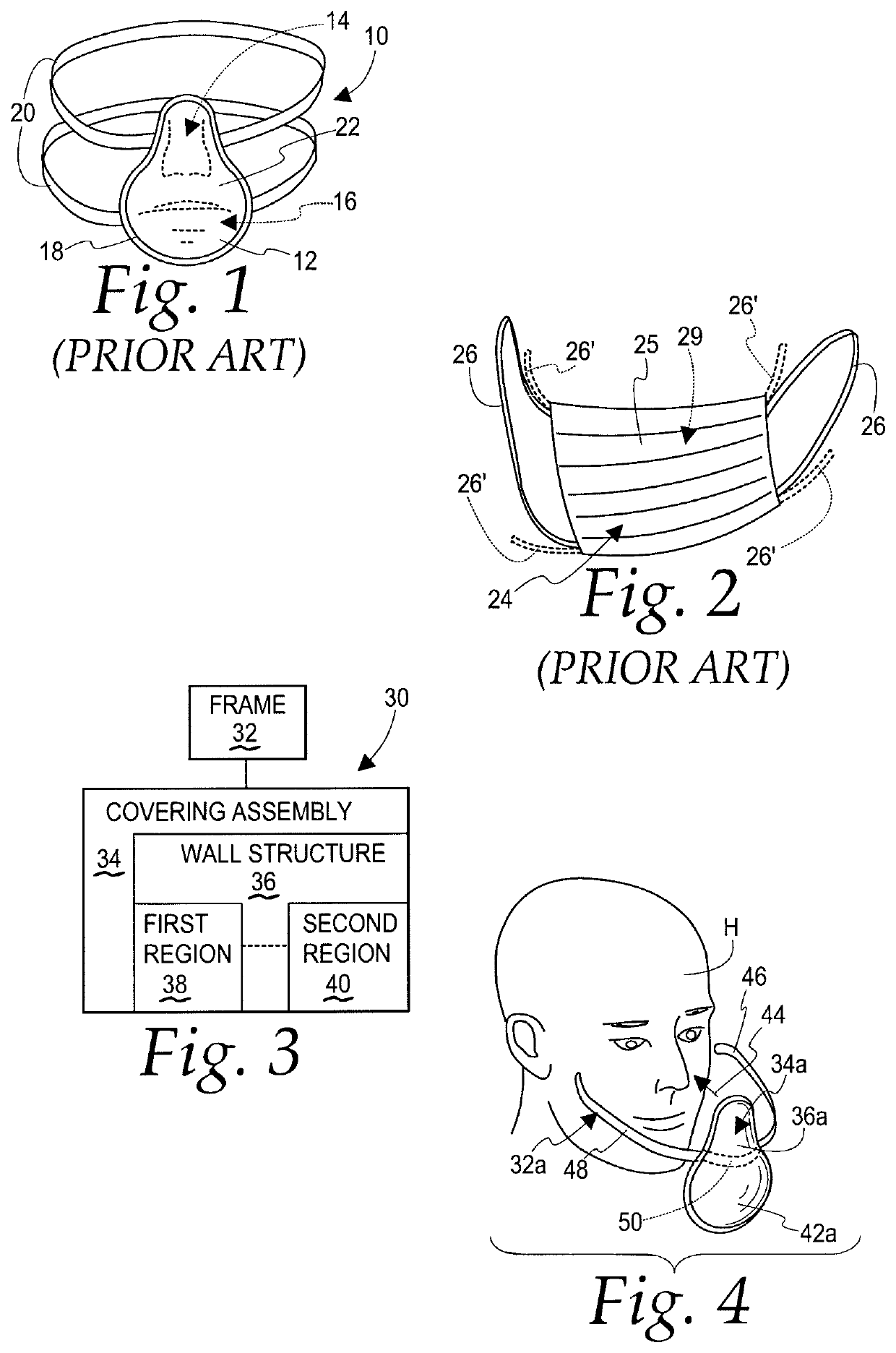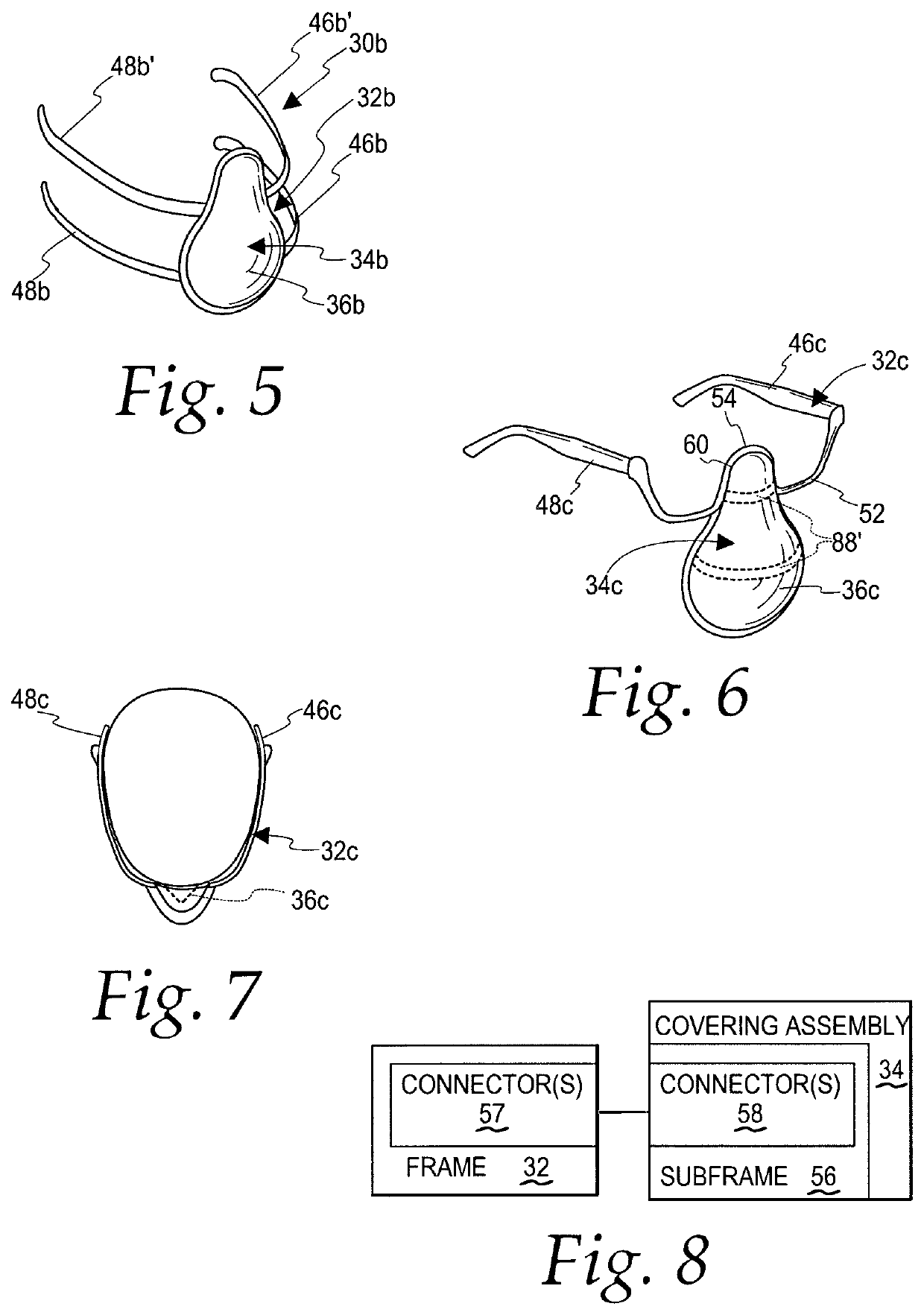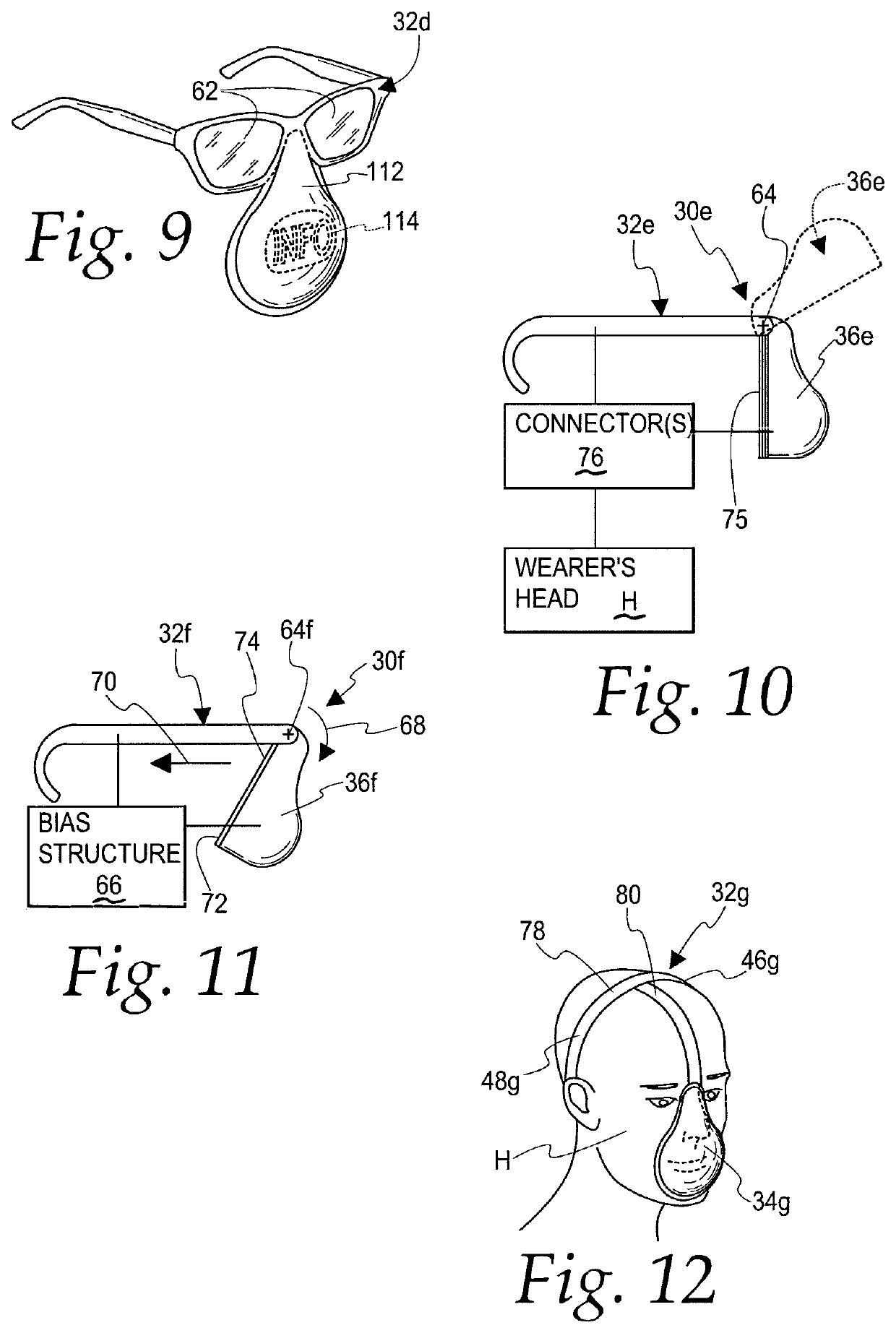Method of controlling transmission of particles to and away from a person's frontal face region
a technology of frontal face and transmission method, which is applied in the direction of protective clothing, goggles, breathing protection, etc., can solve the problems of unsanitary or unsafe, limited use of surgical masks, and respiratory problems or other dangerous health conditions
- Summary
- Abstract
- Description
- Claims
- Application Information
AI Technical Summary
Benefits of technology
Problems solved by technology
Method used
Image
Examples
Embodiment Construction
[0088]FIGS. 1 and 2 depict currently existing surgical-type masks of the general type to which the present invention is directed. In FIG. 1, a mask 10 has a cup-shaped body 12 which tapers upwardly and nominally conforms to a wearer's nose 14 and a wearer's face region around the mouth 16, as viewed from a front perspective. A perimeter edge 18, shown optionally outturned, will rest generally conformingly against the front region of a wearer's face with the mask being worn.
[0089]The body 12 is maintained on a wearer's head by elastic straps 20 which, in conjunction with the body 12, encircle a wearer's head, and biasably draw the body 12 rearwardly against the wearer's front facial region.
[0090]The body 18 has a continuous wall 22 made from one or more layers that allow air transmission therethrough while having certain filtering capabilities. While different materials are used for such walls, the fabrics commonly used have the ability to block passage of particles of certain size, ...
PUM
 Login to View More
Login to View More Abstract
Description
Claims
Application Information
 Login to View More
Login to View More - R&D
- Intellectual Property
- Life Sciences
- Materials
- Tech Scout
- Unparalleled Data Quality
- Higher Quality Content
- 60% Fewer Hallucinations
Browse by: Latest US Patents, China's latest patents, Technical Efficacy Thesaurus, Application Domain, Technology Topic, Popular Technical Reports.
© 2025 PatSnap. All rights reserved.Legal|Privacy policy|Modern Slavery Act Transparency Statement|Sitemap|About US| Contact US: help@patsnap.com



